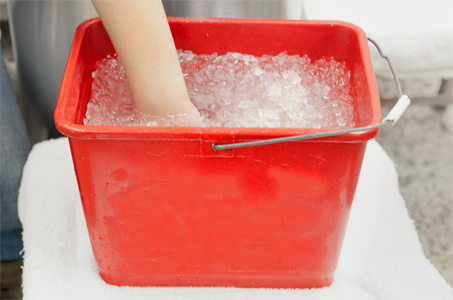If you missed my first article looking at the evidence behind common sports medicine practices, it can be found HERE.
Compression Socks
When we run there is a vast increase in blood flow in and out of our legs. Our contracting calves work a bit like a heart in helping to pump and squeeze blood back out of the legs. The more flow and pressure in our blood vessels, the more they leak fluid. They become even more leaky when muscle cells become damaged or accumulate chemicals of fatigue like lactic acid. Compression garments claim to improve blood flow and aid recovery by limiting the accumulation of fluid. Review articles have analyzed all the data published in peer review sports medicine journals and determined that there are no statistically significant effects on running performance over any distance. However, there were slight improvements in time to exhaustion, delayed onset muscle soreness (DOMS) and peak muscle power immediately after exercise. Markers of muscle damage and inflammation were also slightly reduced. The evidence is there that compression socks won’t make you run faster but can help to make you recover quicker.
Compression Socks For Performance
Compression Socks for DOMS and recovery
Topical Ice Application

There was a time when anyone with a soft tissue injury of any sort was told to R.I.C.E. (Rest, Ice, Compression, Elevation). Incredibly there are very few robust randomized control trials examining the effectiveness of ice for acute injurie and none that show a significant advantage. By applying basic sciences however, we know that ice restricts blood flow to a region through vasoconstriction and reduces pain through slowing nerve conduction. There are certain conditions, such as high grade ankle sprains, where limiting the early inflammatory response can result in an earlier return to function and it is therefore plausible (but not proven) that early application of ice may be of benefit. Overuse injuries however are a completely different story. Most overuse injuries are due to disrepair or degeneration. Stress fractures, tendinopathy, plantar fasciitis and other overuse conditions can’t remodel and repair themselves if we limit the blood flow to that area by freezing it.
Ice for acute strains and sprains
Ice for overuse injuries
Foam Roller
Like the comment I made about stretching in my last mythbuster article, foam rollers can increase muscle/tendon complex length but the improvement has been shown to last for only about 10minutes. It has however been shown to contribute to longer term flexibility but only when performed on a regular basis. Foam rolling may be safer than stretching in some cases where a forceful tensile load can be aggravating to an injury (such as an achilles enthesitis) or when stretching is difficult (such as the ITB which is difficult to effectively stretch as it crosses two joints). Similar to massage, (see below) there is evidence that using a foam roller after activity can reduce the subsequent development of delayed onset muscle soreness.
Foam Roller before exercise
Foam Roller used regularly to improve flexibility
Foam roller for DOMS
Massage
The effect of massage therapy is incredibly difficult to study. It is very hard to design a clinical trial to compare to a placebo and impossible to ‘blind’ the practitioner or recipient to the treatment delivered/received. There are different types of massage, different applications and subtle differences in therapists which can make it as much of an art as a science. Cochrane reviews of massage have concluded that there is evidence to support post-exercise massage in effectively reducing the severity of delayed onset muscle soreness however there was no evidence to suggest it improved subsequent muscle testing or performance. Massage has been shown to be effective in helping to target a relieve specific muscle spasm. Aside from the physical effects, massage has proven psychological effects and can help with relaxation and mood.
Massage for Recovery
Massage for specific muscle tension
Massage for Performance
Topical Anti-Inflammatory Gels
Anti-inflammatory gels are real anti-inflammatory medications that penetrate the skin rather than being absorbed orally. There is no argument that the medication works when it enters the body but how deep is it absorbed and how effective is it? Studies show that the peak concentration of medication is achieved at a depth of 3-4mm. A detectable amount often reaches the blood stream but in doses unlikely to be effective beyond the site of application. There are plenty of sites in the body where 3-4mm of penetration is ideal (superficial tendons of hands and feet and even the ITB at the knee) but using it over large joints and for back pain is unlikely to be effective.





















